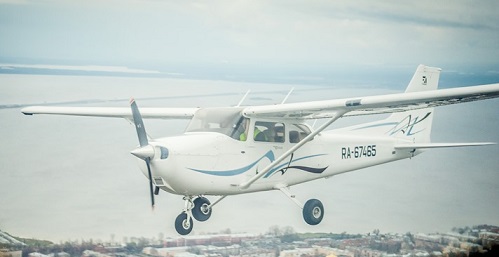“Reverse Engineering” of the “Grozny” apparatus from Jules Verne’s novel “The Lord of the World”
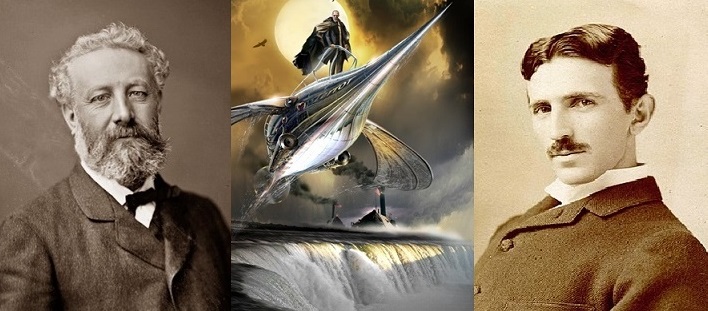
According to UNESCO statistics, the books of Jules Verne rank second in translation in the world, second only to the works of Agatha Christie.There are such books that leave a feeling of understatement. "The Lord of the World" is just one of them. So the reviews and reviews of the book may have different opinions, but a weak description of what is happening and the technical features of the apparatus of 3 elements here stands out most.
HE Zhukovsky, the founder of modern aeromechanics, kept in his library, among the works of his predecessors, the only fictional book - Robur the Conqueror by Jules Verne (Lord of the World is a continuation of Robur the Conqueror).
The book is built on the story of Detective Stro ...
')
And if you approach the consideration of this work with detective methods, those very "technical features" are no longer so hidden.
To begin with, let's define the main principle of the “Terrible” device. Of course this is a dual purpose of the main elements. Wheels with knitting needles are designed for "earth - water", screws coming out of the turbine for "water - air", and the body in the form of a spindle is ideal for two means of transportation. Even the wings in the book were used for both vertical takeoff and horizontal flight.
The following is an area of obvious assumptions.
- If the car - a submarine? Surely she should have water ballast cavities to change buoyancy? Captain Nemo's Nautilus had these elements, and even the real submarines of the time had the same elements.
- If the car with wheels for movement on the ground, then these wheels can turn in different directions?
- If the machine uses Parsons turbines does it mean steam? Since the other Parsons turbines in principle does not exist.
For a complete description of the further investigation I will cite a number of discoveries that occurred during the last years of Jules Verne’s life. As you know, the famous science fiction writer never hid what is based in his novels on the latest achievements of technical thought, and therefore knowledge of the “technical aura” here will give greater clarity of the subsequent statement of assumptions.
Record electric car on the ground
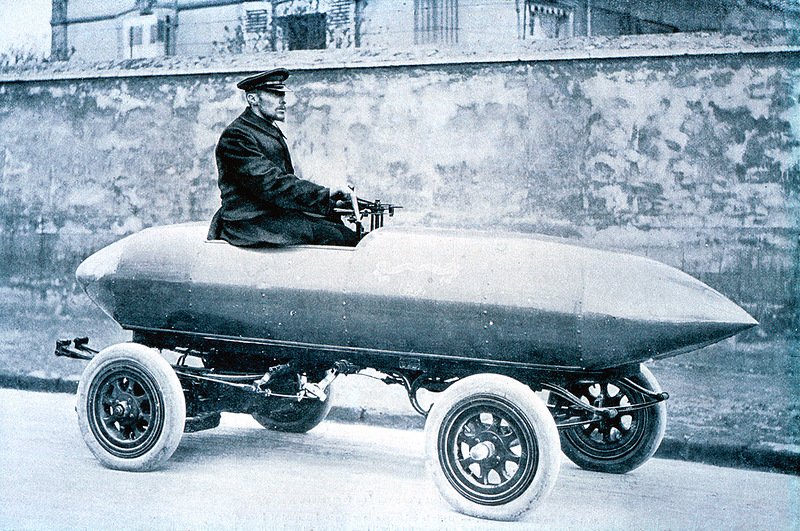
La Jamais Contente is a French electric car that set a speed record on April 29 or May 1, 1899 in Asher, near Paris. Marriage reached 105.882 km / h (65.792 mph).
Aircrafts
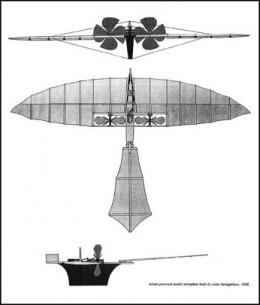
Aerial Steam Carriage Project by English Engineer William Samuel Henson (1812-1888). The aircraft, according to the author, moved at the expense of propellers and wing flaps , but had too much steam drive mass. Only one model built was able to fly 20 meters.
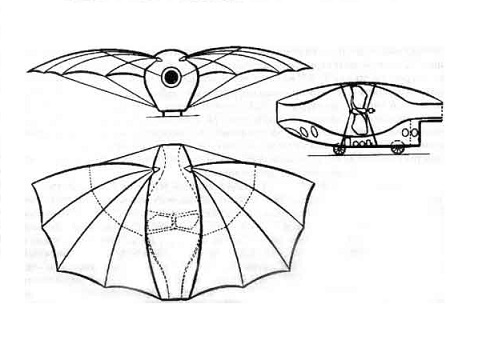
Wings of the bat in the project of the late XIX century. In 1893, the German inventor Gustav Koch proposed to build a tailless aircraft with a steam engine, outwardly resembling "Eol", but even more unusual in design. Koch intended to install the propeller inside the circular fuselage, that is, to create something like a hybrid of a vacuum cleaner and a bat.
Submarine technology of the 19th century.
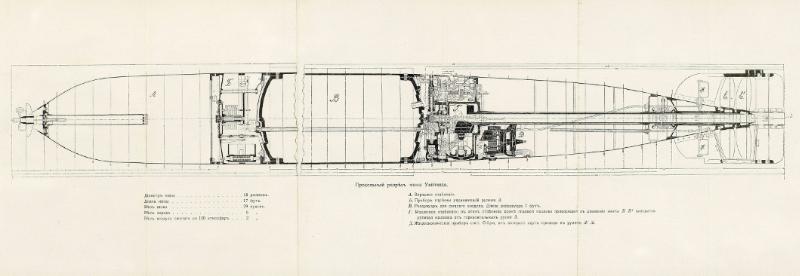
In 1865, the project of weapons (or as they called it “self-propelled torpedo”) was proposed by the Russian inventor I.F. Aleksandrovsky. The torpedo was equipped with an engine that runs on compressed air.
Le Neptune (1884) appeared at the exhibition in Nice; lined by engineer Tozelli. It emerged - pumping out water ballast , and more vigorously, if you dump 2 external lead loads. This P. apparatus represents a perfectly realized device for the stay of people at atmospheric pressure at a very significant depth.
"Le Gymnote" (1889) was built by civil engineer of the French fleet G. Zede by the ideas of Dupuy de Loma; built and lowered in Toulon. The construction did not mean military purposes, and this P. does not carry any armament. The “Himpot” represents an elongated spindle of 17 ¼ m long and 1.8 m in diameter at the mid-frame, just enough that a person, standing at the bottom of it, has a head in a lantern or turret with strong glass windows. Displacement 30 tons. All actions and mechanisms of the boat are driven by electricity, according to the Krebs system; its lightweight 16-pole electric motor from 204 batteries can tell the propeller of 1 ½ diameter the speed is almost proportional to the potential difference between battery batteries, which is achieved by a different grouping of batteries, totaling 67300 ampere-hours. The length of the P. boat is divided by impenetrable partitions into 3 parts. The nose part reaches almost to the middle of the P. of the boat, accommodates most of the batteries, the ram water compartment, followed by the reservoir compressed to 75 atm. air; a valve comes out of the air pump, which ventilates and pumps air when P. the boat floats to the surface of the water, and almost in the middle is the visual device, the periscope; 2) the middle part — from the middle of the P. of the boat to aft, contains the main and auxiliary machines, the commander’s turret, through which the crew enters inside the P. of the boat; there is also a seat on a screw, a gyroscope, a compass and a steering wheel, and on the back on either side there are two water tanks; pump Berensa for pumping ballast water; steering servomotor, pressure gauge and electric motor with its devices; 3) the feed compartment - holds a water tank for the counterweight nasal; here the propeller runs along the axis. Outside: horizontal and vertical rudders, and a rear propeller.
The first type of plastic
The first plastic was obtained by the English metallurgist and inventor Alexander Parks in 1855. Parks called it parkesin (later another name for celluloid became widespread) . Parquezin was first presented at the Great International Exhibition in London in 1862. Parquezin is often called artificial ivory.
The invention of hydrogen, methods of storage and use of this gas
The release of combustible gas in the interaction of acids and metals was observed in the 16th and 17th centuries at the dawn of the development of chemistry as a science. The famous English physicist and chemist G. Cavendish in 1766 investigated this gas and called it “combustible air”. When burning, “combustible air” gave water, but Cavendish’s commitment to the phlogiston theory prevented him from drawing the right conclusions. The French chemist A. Lavoisier, together with the engineer J. Meunier, using special gasometers, in 1783 carried out the synthesis of water, and then its analysis, decomposing the water vapor with a hot iron. Thus, he found that "combustible air" is part of the water and can be obtained from it.
The principle of operation of fuel cells was discovered in 1839 by the English scientist W. Grove , who found that the electrolysis process is reversible, that is, hydrogen and oxygen can be combined into water molecules without burning, but with the release of heat and electricity. The scientist called his device, where it was possible to carry out this reaction, “gas battery”, and it was the first fuel cell.
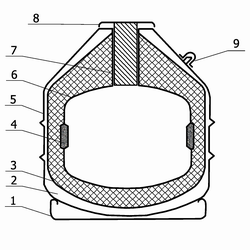
Dewar Vessel Diagram
1 - stand; 2 - vacuum cavity; 3 - heat insulation; 4 - adsorbent; 5 - outer vessel; 6 - inner vessel; 7 - throat; 8 - cover; 9 - vacuum tube
The first container for storing liquefied gases was developed in 1881 by the German physicist A. F. Weinhold. It was a glass box with double walls with air evacuated from the inter-wall space and was used by physicists K. Olshansky and S. Wroblewski to store liquid oxygen. The Scottish physicist - chemist Sir James Dewar improved the Weinhold glass box in 1892, turning it into a narrow-necked double-walled flask to reduce the evaporation of liquid. The wall space is silvered and air is pumped out of it. For the first time, his vessel Dewar was demonstrated to an audience at a public lecture on January 20, 1893. All this fragile design Dewar hung on the springs in a metal casing. Thanks to his design, Dewar was the first to get and keep liquid (1898) and even tried to get solid hydrogen (1899). The original Dewar was a glass flask with double walls, from the space between which the air was pumped out to create a vacuum. To reduce radiation losses, both internal surfaces of the flask were covered with a reflective layer. Dewar used silver as a reflective coating. Modern Dewar vessels are structurally different. Internal and external vessels are made of aluminum or stainless steel. The loss of heat of the material in this case is not very important, and strength and weight play a big role.
Perfect Drive for Flywheel
A study of the flight of birds has shown that with an increase in the size of the bird, the number of wings flapping decreases. The approximate number of strokes for a manned ornithopter will be approximately 50 strokes per minute. Due to the need to transform the rotational motion into translational and reduce high revolutions, modern ICEs are not the best way to solve this problem, just like an electric motor. If you even “save” the internal combustion engine from the crankshaft, make it slow and transfer the forward movement of the pistons directly to the wings, there is a problem of inertial forces arising when attempting to transfer the expansion gas during an explosion for a short period of time to move relatively large massive wings.
At the same time, for example, a steam engine, which allows you to adjust the speed and smoothness of the movement of the pistons, would be much better suited to transfer energy to flapping wings. The task of building an ornithopter in this case is reduced to the design of the engine and the units for it, the boiler with the furnace, the condenser, etc., in accordance with the aerodynamics and kinematics of the aircraft. The very property of a steam engine to automatically increase the torque at lower revolutions makes this type of drive ideal in conditions of constantly changing resistance of the external environment when the wing flaps.
Steam turbine + electric generator
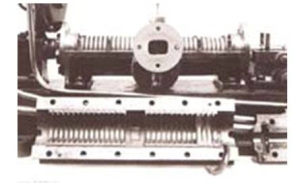
In 1884, English inventor Parsons patented a multi-stage jet turbine, specially created by him to drive an electric generator. At a lower speed of rotation, the steam energy was used here as much as possible due to the fact that steam, passing through 15 stages, expanded gradually.
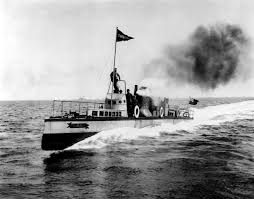
In 1894 the first steamboat “Turbinia” was launched with a steam turbine drive. Soon the steam turbines began to be installed on high-speed vessels. The French scientist Rato derived a complex theory of turbomachines based on his experience. Over time, the Parsons turbine gave way to compact active-jet turbines. Although today the steam turbines basically retained the features of the Parsons turbine.
Tesla
Under the impression of Tesla's experiments, Jules Verne creates his captain Nemo, and the newspapers crown the scientist with the laurels of the "Lord of Lightning."
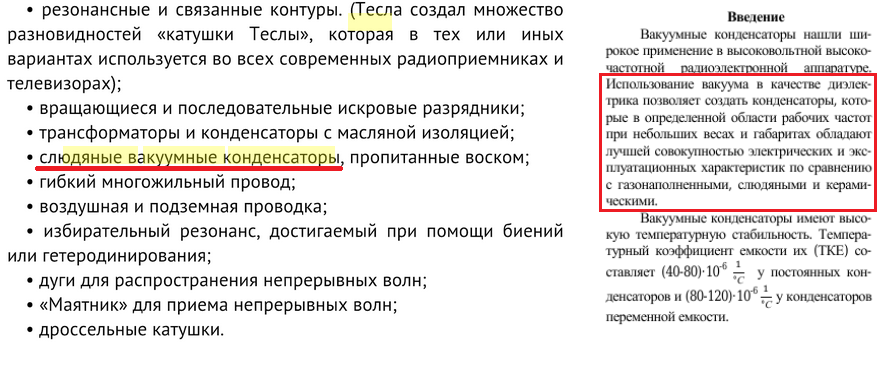
Tesla's vacuum capacitors are listed in the Nikola Tesla book. Messenger of another world. Man X (Marc Livintal).
Many of the experiments of the scientist can not be repeated to this day, and his article “The World System” of 1900 to the surprise accurately describes the information society of the beginning of the XXI century.
The Tesla AC machines proved to be more economical than Edison’s DC devices. With their use in the United States, a number of industrial electrical installations were commissioned - including the Niagara Hydroelectric Power Station, the largest in those years.
In the “Robure the Conqueror” and “Lord of the World” the Niagara HES is mentioned several times, and many events also take place around it.In 1892, Tesla visits London. Here, before the eyes of the “most respectable public,” he demonstrates the ignition of a lamp by wireless transmission of electricity. The scientist connects himself to the high-frequency AC circuit, causing his own body to glow in the dark with a strange bluish flame.
Returning to New York, Nikola told reporters: “I’m not working for the present any more, I’m working for the future. The future belongs to me! ”
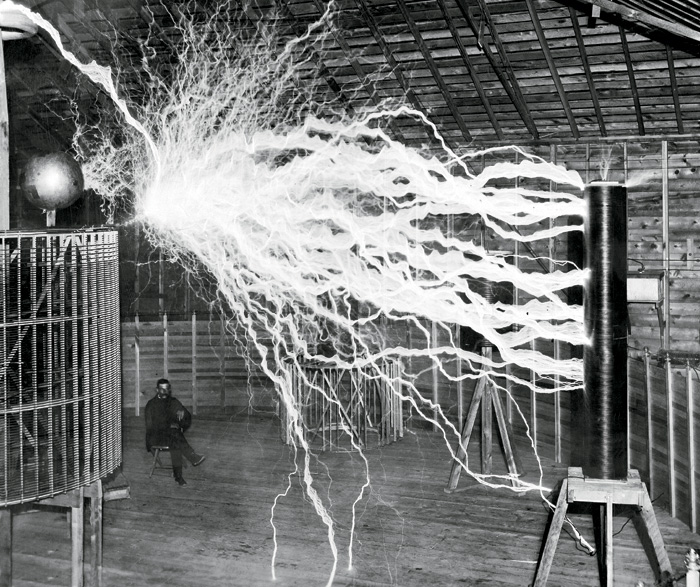
This photo was taken in a Tesla lab in Colorado Springs. Here in 1899, the inventor investigated the thunderstorms and the electrical potential of the Earth, hoping to create a system of wireless energy transmission to any part of the planet. For six months, Tesla conducted a series of experiments to study the properties of atmospheric electricity.
On Habré there is a description of the smartphones in Tesla's presentation , combat UAVs , but Tesla’s inventions are numerous, and therefore the best is listed in these films.
All of these inventions were breakthroughs in the time of Jules Verne, and they are displayed not only in the story about flying cars. Further, already on the basis of these inventions, and information about the device and observations of the three-element apparatus, I will express my versions of its device.
Cruise service
“And if it were light, people from villages and farms might have noticed how some giant bird of prey flew across the sky, some kind of winged monster that rose above Great Airy and flew east!” (1. What happens in district)
“Well, and the flame, which seemed from behind the rocks?
“O flame, Mr. Strok, that is another thing! ...”
I saw him, I saw him with my own eyes, and even at a great distance the clouds were painted with his glow. In addition, from the summit came a noise similar to the whistle of steam discharged from the boiler . ”(2. In Morganton)
“The main engine consisted of two Parsons turbines , arranged longitudinally on both sides of the keel. Driven with immense speed by these turbines, the screws crashed into the water, caused the apparatus to move in the water, and I even asked myself whether they gave it the same translational motion in the atmosphere. "(15." Eagle's Nest ")
"The device swung several times, then the lower turbines quickly began to spin, and I heard the measured beats of powerful wings." (17. "In the name of the law!")
“Once on the deck, I saw what I could not see during the night flight from Niagara Falls to Great Airy - I saw how two huge wings act, swinging from the left and right sides, while the turbines rotated wildly under the platform of the apparatus. " (17." In the name of the law! ")
These sections from the book on powerful wings were often misleading the reader, who still believed that the machine was moving due to the “flapping of the wings”, that is, Makholet - ornikopter. This statement is fundamentally wrong, and it will become clear if you read these segments more closely and compare them with reality.
So at the beginning of the book and at the end we are given to understand that the car moves only after the launch of turbines! There is no self-waving wings for takeoff in principle! It is further made clear that the drive in the water due to the turbines rotates the screws, and it is suggested that these screws help the movement in the atmosphere, but what is especially important is not a one-time hint at the use of steam (the Parsons turbine is steam in the “real world”).
What follows from this? And only the fact that the wings here play the role of a stabilizer in space. Screws do the main work to create thrust, and steam comes out of the car sometimes, and can also serve as an “accelerator” . More details why it will be lower.
The questions of what kind of monster is this, as you can see, become more than answers, but there is a MAIN QUESTION! WHAT IS THE ENERGY FOR CREATING A PAIR? WHERE IS THERE A LOT OF WATER?
"GROZNY"
“Robur was standing in the same position. Putting one hand on the steering wheel and the other on the regulator, he directed the machine, which flapped its wings from cloud to cloud, into the thick of thunderstorms, where electrical discharges occurred most frequently. " (17." In the name of the law! ")
“It followed from this that this machine was driven by electricity and its batteries of an unknown type contained inexhaustible energy reserves, so to speak.” (4. Racing car club)
"Everyone assumed that it was probably driven by an electric motor, but no one could guess from which source this engine was powered." (4. Racing car club)
“ She must have acted with the help of electric energy of extraordinarily high voltage, the source of which, apparently, was located here on the ship. But in that case there was another question: where did the electricity come from here - from galvanic batteries, from batteries? And how are they charged - these batteries, these batteries? Where do you get your energy from? Where is the power plant that produces it? Do they extract electricity from the surrounding air, or from the water, using methods unknown to this day? "
“As for the energy that supported and moved the device in the air, it was not delivered by water vapor or any other vapor, liquid, compressed air or some other elastic gas. It was also not a mixture of any explosives. No, the Albatross was set in motion by the force that is used for many other purposes - electricity. However, how and where did the inventor draw electricity in order to charge the batteries? It is quite possible (after all, his secret remained unsolved) that he extracted energy from the surrounding air, always more or less charged with electricity, just as the famous captain Nemo, plunging his Nautilus deep into the ocean, extracted electricity from the environment. » (16. Robur the Conqueror)
“It had the shape of a spindle; its greenish color merged with the color of sea water. "(5. Off the coast of New England)
Perhaps it does not immediately become obvious, but the book in the form of doubt expressed a direct explanation of the power source "Grozny". Extraction of energy to the greatest possible extent in the air is possible only during the Thunderstorm, directly coming into contact with charged thunderclouds.
The source is clear, but what about the battery already guesses. At that time, they could not have been unaware of the properties of water to decompose under the influence of strong voltage (electrolysis), and were aware of the possibility of creating fuel cells on the reverse principle. Conducted the first experiments to reduce the resistance of the conductor by cooling to low temperatures ...
Combining these guesses, it can be assumed that the energy of electrical lightning discharges was converted, and partially accumulated with the help of vacuum capacitors, in order to then carry out the electrolysis of water and then produce hydrogen for liquefaction. The conductors before and after the condenser in vacuum could be cooled with the same hydrogen, which significantly reduced the resistance. The need for capacitors is only one - instantly take the whole charge of lightning. Perhaps electrical engineering at Grozny could operate at ultrahigh voltage due to the same cooling of conductors with liquid hydrogen (or other gases included in the cascade method of producing liquid gases). As you know, the most high-performance generators have just such a cooling.
.
Another advantage of the hydrogen theory would be the ability on board the Robur apparatus to store fuel capable of being converted into steam (for Parsons turbines) when burning, and to have an oxygen supply for the “submarine” mode.
The theme of cryonics in the books of Jules Verne was revealed in the novel “Fifty Million Begumy” in 1879, where the plot used projectiles with liquid carbon dioxide. This book is mentioned in the first book about Robur "Robur the Conqueror".To store a large margin in the case of a superconductor-battery is also possible in theory, but until the time of writing the book, this property of the conductor was not open, and Jules Verne could not know about it. However, perhaps when communicating with scientists, he still could have assumed superconductivity.
Now a little about the location of these drives in the process of obtaining energy ...
The body of the “Grozny”, according to Strok, was made of aluminum, but the description of the device in water suggests that it “turned green”, and this is already a reaction of another metal. Following the logic of obtaining energy from the air, it would be logical to reduce the resistance to the flow of current through the body, and then most likely they used "silver plating of aluminum . " As for the energy storage, most likely we are talking about capacitors , which were located in the casing of the "Terrible" in a vacuum . Such a design made it possible to partially transform the entire body of the apparatus into a “Dewar vessel”, which contributed to the storage of the hydrogen produced in the liquid or solid phase inside the center of the machine. Aluminum silvering here was also an internal one, since the original “Dewar vessel” has this process and performs a protective barrier function for hydrogen (silver is not saturated with hydrogen).
An episode with a ship crash can then be explained by a car overload from overcharging, which first caused the plastics to collapse in a plating (according to “Grozny there was a slight shudder throughout the entire body of the book.) And then the loss of thermal stability of liquid hydrogen its output in the form of gas through the Parsons turbine and other elements. The destruction was rapid, and a smooth ignition of hydrogen did not occur precisely because this gas has extremely high volatility, and left faster than it could catch fire in the rapid flow of air, and immediately after the explosion there was no burning. The key point in the release of hydrogen through the hull of the ship was its impact on metals. It has long been known that cooling metal to low temperatures contributes to cold brittleness - the phenomenon of metal cracking. It is because of this rapid cooling in the center of Grozny that the hull broke, since it was in the center according to the layout logic that the tank should have been (the body of the machine is a spindle, and therefore most of the space for the tank is in the center). The destruction of wing flap mechanisms was the same because of the passage of cooling gas into the steam wing drive mechanism. In general, inside the Grozny, in addition to metal mechanisms, there was water in a certain amount, and therefore the rapid freezing of this particular substance could trigger the destruction reaction (the ice increases several times during freezing and, in addition, becomes very hard with a strong minus ). Again, it is worth considering that the folding mechanism of the wings was also located in the center, which means it was the weakest point in the design due to the large number of stress points.
The casing of the “Terrible” was enormous in terms of strength, but, like in modern submarines, it does not protect against the internal explosion causing a similar break in the hull.
This is just one version of the crash, but there will be a second one. This version is “complex”, as I assume that the principle of dual use is likely to be used in this design. Not to use a vacuum between the walls for capacitors means to increase the size of an already complex machine, but to use this risk (which Robur always wanted more, since on the Albatross, as we remember, he did not provide ANY PARASHUT!)
A little bit about the name "Grozny"
As is well known, Jules Verne always tried to select names for his vehicles based on their habitat and function. ( ) , «» ( ), «» ? . , , «», «», «» . . ( , ?)
, , . , «» «». , , . «» — ! ? «» « » «».
«» .
« , : , «» «». — , , ? - !
. , , , , . , , — , , . . , , , — , ; — , — , . — — , . , , , , , «».» ( «-»)
«» , «» , , ? ! .
«» . — 10 . 2 — 4 . , , ( ).
, «».
. , ( ), . , , . , , , ( «-»). — «», ( , «» ).
, . « » 4- . , «». .
2-4- 2 8 .
, ? …
« , : .» (13. «»)
«» «» .
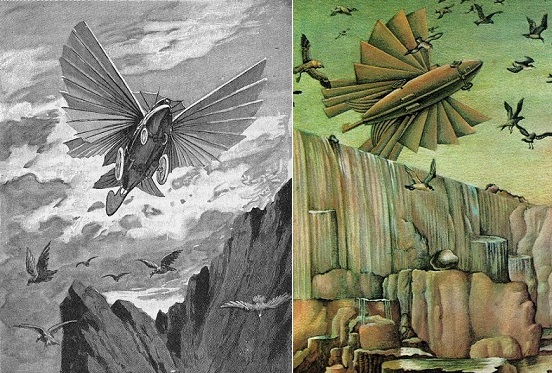
, ( ) .
, .
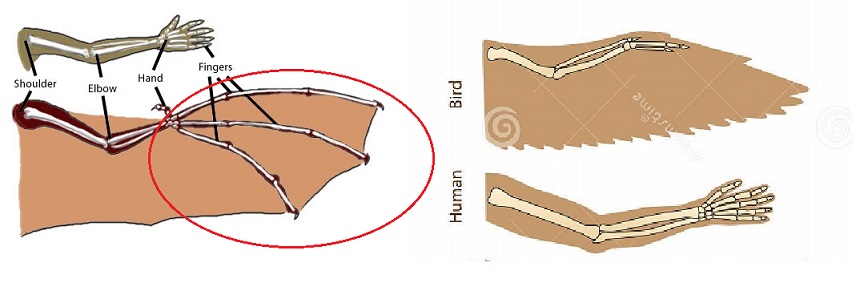
« » , . «» .
, ?
«» «».
— , . , . . .
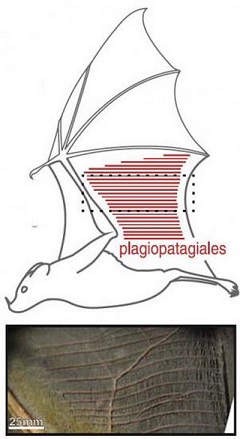
( ).
« » «» «»? ? , , . — «», « » «- .
— «» , .
«» « » .
. . , .
, 40 % . , . , , . , , . .
, , . , . , , 180° .
— « ?».
— «» — , . «» « » !
«» ?
, .
Bat Bot .
«». «». , . , «»- « ».
«». «-».
, .
…
«» . — « 250 / , ?», « , ?»
, 1900 ( , ). , . , «» .
As we see on the video, the speed is clearly not 250 km / h, and the cars already with a good “tail” of dust are traveling.
Separately, it is worth mentioning that after analyzing the power source, I think it is clear that a cloud of vapor could well be added to the dust veil in motion?
“Suddenly, when the clock on the town square in Prairie do Chin struck half past nine, a terrible noise was heard two miles away from this town: something was rolling in a thick cloud of dust, with a roar like a howl of a sea siren. "(4. Racing Automobile Club)
"She disappeared in an instant, raising a long strip of white dust, like a ribbon of steam that stretches behind the train of an express train ." (4. Racing car club)
From these passages it is clear that this was the case. Separately, it is worth mentioning that the appearance of the car took place outside the city "suddenly", and as we know, the ability to fly was the first of this car, and therefore it is logical to assume that the car landed from the air.
The second question is already from the field of aerodynamics, namely, the section on downforce. Even in our time, in order to move normally at speeds above 100 km, it is necessary to take into account the need to create additional downforce due to the shape of the car or the anti-wing. This additional pressure on the tires compensates for forces tending to detach a car from the surface and contribute to better grip at high speed (which is extremely important for maneuvering). Another important point is the very possibility of movement due to the coupling of wheels with the road, which is ensured by this pressing with the necessary effort. At the beginning of the century, they tried to solve this problem by aircraft - making an air propeller a source of thrust and maneuvering at speed, and using tires only for maneuvering at low speeds. Now let's remember what the “Terrible” is - a machine whose movement in space is provided by turbines, wings, i.e. Manipulations with the surrounding air - water environment, and from this it follows that he does not need downforce for the wheels! Movement on the hard surface of those times can hardly be called comfortable because of the unevenness of the road and the non-uniform adhesion of the wheels to the ground, and therefore it only adds confidence in the statement that the car used the wheels mainly to maintain the car at a certain height above the road, but they are not the main traction. were used. Perhaps the blades on the wheels could be used for maneuver by creating a side thrust, but in principle, the Robura machine always chose straight road sections (which is not surprising since it is difficult to perform any maneuvers at 250 km / h).
The book clearly states that the driver was not visible when the car was moving, and even the participants of the race could not see it when it overtook them. Let me remind you that the speed is 250 km / h! And how could Robur at such a speed drive a car in a cloud of dust and steam, and a strong oncoming air flow? The control room was aft! The answer is given later in the book - this is a periscope (mounted on the nose of the device)!
In the water, and under the water ...
Water ... This is probably the very environment for which the “Terrible” was suitable especially well. With a spindle-shaped case and two steam turbines with screws, this machine could move in water, and under water like a torpedo.
“I only noticed that this high-speed boat left behind the stern a long, flat jet .” (13. Aboard the “Terrible”)
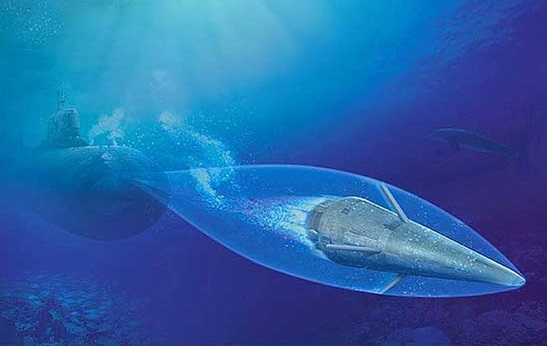
Doesn't it look like a torpedo track?
Modern analogues use the same steam.
Given that the acceleration of torpedoes still occurs at the expense of vaporization, such an exact description of the process of movement on water leaves no doubt.
Under water, the movement was probably ensured by the thrust of wheels with paddles. About the possibility of using wheels for maneuvering under water, the same is said in the book, and what is remarkable - for driving under water! This means that the wheels in this case, turning, and just turn into propellers when turning relative to the body.
Oxygen for breathing? Well, we remember that water in the decomposition gives oxygen? Of course, comparing with 20 thousand leagues under water, it is stupid to assume that there is no supply of compressed (or liquid?) Oxygen on such a small ship-plane-car.
Steam drive accelerator here is not just like that. In addition to getting rid of steam under high pressure, is it possible to fill the cavity with water for immersion? Control of buoyancy due to filling with water in the case of a submarine is mandatory, and if we consider that this water can also be heated to the state of steam ...
It is possible that "lifting a long strip of white dust, like a ribbon of steam that stretches behind a steam train locomotive." Is it just ordinary ... salt? Which precipitated out of superheated steam when the “Terrible” accelerated on the ground?
Now I understand why the mechanism of immersion under the water at Robur broke? All the same, boil seawater, and then fresh water in the lake, and hopes that this will not damage TENY (or other heat exchangers) is very short-sighted. It is possible to understand why all these tests were carried out from the point of view of testing the maximum modes of the “Terrible”, which Robur did in fact, therefore, breakdowns in this case were common. The accident with the ram of the ship in the lake could also violate the stability of a number of mechanisms, and that is why the hatch to the engine room was open (perhaps because they were getting rid of small leaks of hydrogen).
In the air…
Flying in the air of "Grozny" is not interesting by the fact of the flight and partial use of the bat principle discussed above. Rather, more interest is the scheme of the apparatus, which is now called the "airplane-wing." The disadvantage of this scheme is precisely in the difficulty of maintaining a stable flight, due to the lack of “stabilizers” as on conventional planes.

On the left is the American Northrop B-2 Spirit, and on the right its “grandfather” is the German project of the “flying wing”.
The wing aircraft is considered to be a promising scheme that was implemented on Stealth fighters, but on this type of aircraft electronics is responsible for stabilization in flight (by manipulating the flaps, flaps, etc.), and in the case of the “Terrible” stabilization is achieved due to active movement wing (the advantage of the flyworm is that he himself can regulate the process of impact on the environment, and not passively react to the oncoming air flow)!
About the wing drive
The question of using the steam drive of the wings may cause doubts ... After all, apart from heating the water to the state of steam, it must also be cooled somehow? Let not all the water, but only a part, because using hydrogen at the outlet we always get water, but this liquid is clearly not enough to drive such a powerful mechanism (especially if you just throw it away)?
That is why the help in solving this problem can again take an example ... bats!
The fact is that live bats also have problems with thermoregulation, and use wings to cool the blood into which they are cooled by an incoming stream of air. The same natural radiator can also be used by the “Terrible” swinging its wings to cool superheated steam. In the future, steam could pass through the turbines and already completely return to the “accelerator” tank.
In the same tank or tanks could be stored in addition to steam and other gases, or liquids in the absence of the need for underwater movement.
The presence of an “evaporator” that converts liquid hydrogen to a gaseous state, the same could have contributed to the cooling of steam, but still this would obviously not be enough under heavy load.
There were two flight and landing modes!
“Suddenly, when the clock on the town square in Prairie do Chin struck half past nine, a terrible noise was heard two miles away from this town: something was rolling in a thick cloud of dust, with a roar like a howl of a sea siren. She disappeared in an instant, raising a long strip of white dust, like a ribbon of steam that stretches behind the train of an express train. "(4. Racing Automobile Club)
“Well, and the flame, which seemed from behind the rocks?
“O flame, Mr. Strok, that is another thing! ...”
I saw him, I saw him with my own eyes, and even at a great distance the clouds were painted with his glow. In addition, from the summit came a noise similar to the whistle of steam discharged from the boiler. ” (2. In Morganton)
“The hollow had the shape of an almost regular oval, stretching from South to North. It was surrounded by a wall of rocks, but I could not judge what the height of these rocks was and the structure of the ridge: above us there was a thick fog that had not yet melted from the rays of the sun. "(15." Eagle's nest ")
"In places, broad bands of evaporation reached the sandy soil" (15. "Eagle's nest")
“From time to time, the haze veil on top burst, and I saw the silhouettes of huge birds, whose hoarse cries broke deep silence. Who knows, perhaps, the appearance of this giant winged monster frightened the birds, because they could not compete with it not in strength or at the height of flight. "(15." Eagle's Nest ")
“ At that moment a strong gust of wind swept from the east, and the sky instantly cleared of fog. The bright rays of the sun, not yet reached the zenith, flooded the site. "(15." Eagle's nest ")
Mist in the mountain nest? And it is not artificial, as well as landing outside the city with the release of steam, and the first take-off that I saw ....? To take off vertically, by analogy with modern vertical take-off aircraft, high-pressure steam was released, creating jet thrust (the same process for landing at the “point”). In this case, the wings additionally receive a denser “air” under the wing, which also facilitates their work.
To summarize in several Mind map.

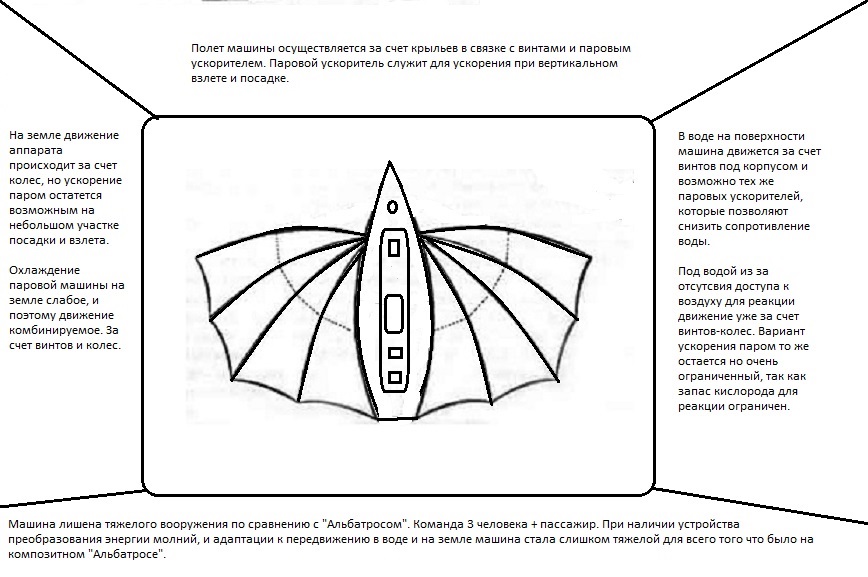

Robur "created" such a unique machine that it is probably difficult to give a general definition here.
Not in vain, Jules Verne was a fan of the “heavier-than-air apparatus” society, as he was able to connect the flywheel in a fancy way - a plane and a steam rocket!
The plot of the book is the same from the understanding of the elements of the machine looks different.
The conclusion about the book, as well as the impression from those read. The features of the device already form a different picture of what is happening. Robur is no longer “crazy”, but simply an engineer who is testing his technique, and the plot now looks like this.
The first stage of testing was Robur conducted directly in the mountains and smoke, i.e., Par is in this case tests on the spot (by analogy with tests of each new car on the treadmill before release).
The second stage is the verification of the movement of all systems. At this stage, problems have already arisen, and the likelihood of finding a base in the mountains has been added to them (Therefore, Robura was so stung by this String journey to its base).
The third stage is a full-fledged, but forced test for long distances, but still this is obviously a specific movement to a permanent source of lightning energy - Lake Marokaibo in Venezuela .
The fact is that catching lightning charges only sporadically, it was a test of the system at minimum loads, and naturally, for more power, the Terrible needed a more constant source of charge.
The only problem was that the repair obviously did not eliminate the leakage of hydrogen in the engine room, and therefore the book often refers to the constant circulation there.
The reason for the final of the “Terrible” lies in the design itself - the purpose of the apparatus.
In this case, you can compare the "Albatross" and "Terrible."
"Albatross" in the book "Robur the Conqueror" is a machine without the possibility of obtaining an external source of energy, which is indicated there and directly. The device-mulkopter was intended only for movement over the air element, and most likely flew on hydrogen fuel cells (the above-mentioned batteries are the necessary “buffer” for smoothing the increase in current consumption, since the fuel cells are not able to drastically change the output parameters of the current ).
In the same “Robure the Conqueror” there is an episode where “Albatross” almost fell due to the thunderstorm electricity, which caused a stupor on the battery and blocked the current access to the screws (Episode over the Caspian Sea). The moment with the water intake is the same funny, because for the operation of open-type batteries you need a lot of water ... and it is the distillate from the hydrogen reaction that is added to them, and not the drinking one everyone thought of (ordinary water is not suitable for batteries!).
But back to the Terrible. The perfection of this device lies not only in its three-spontaneity, but also in the ability to take a thunderstorm charge, and immediately process it into a supply of liquid (and maybe solid?) Hydrogen. The principle of fuel cells was rejected here because of its instability to atmospheric electricity, and therefore there is a process of burning gas. As sometimes they say "the best enemy of the good", and with the "Terrible" turned out the same.
As is known from the tragedy of the Hindenburg and other airships, electricity + hydrogen is a very dangerous concentration in a closed volume. There was no such problem on the Albatross due to constant ventilation and speed, and the “Terrible” literally emerged from the water before the tragedy and soared into the air. Of course, the engine room hatch was closed (after all, it was repaired?), But if there was a small leak there, then the dangerous situation was supplemented with the most unfavorable factor! Charging process from lightning and work at high loads!
So, the “Terrible” did not complete its mission ... but the book does not say that the crew just died, and Strok himself survived! So there is every chance that the protagonist survived as in “Robure the Conqueror”.
Therefore, the continuation of the story could well be. Moreover, the book has a number of hints on further actions of Robur.
After reading my article, I advise you once again to read the book "Robur the Conqueror" - "The Lord of the World", and take another look at this work. Then the feeling of understatement and irrationality of the plot will go away.
PS - In an attempt to solve the technical features of the Robur machine, I encountered a number of unexplained moments, for which there is no definite answer yet. I hope Habr's readers will be able to find an explanation for these technical riddles.
Here they are:
“Turner went down to the engine room, and I noticed that it was lit by electric light bulbs, the light of which, however, did not penetrate outside”
What was that light?
“From this side their outlines were very bizarre: some rocks formed peaks, others sharp spiers, a strange silhouette of one of the cliffs looked like a huge eagle ready to fly into the heavenly expanse.”
“One way or another,” Harry Horn remarked, “the collapse apparently took place here, and meanwhile there is imperceptibly no break in this part of the wall.”
“Meanwhile, we continued to walk around a rocky wall, so much like a regular rampart, that it seemed to be a work of human hands, and not a creation of nature.”
Mountain processed by what? And for what?
"The deck and sides of the vessel were made of metal unknown to me."
Unknown metal - metal? If in the past “Albatross” was made of paper composite? Can plastic look and feel like metal? Judging by the further description, one may get the impression that the deck is completely open, but is it really so?
“I broke red wax seals on an envelope made of very thick paper. These seals depicted something like a shield adorned with three stars. ”
What did this symbol mean?
Article written for the site habr.com . When copying please refer to the source. The author of the article is Efimenko D.S.
Source: https://habr.com/ru/post/442192/
All Articles
